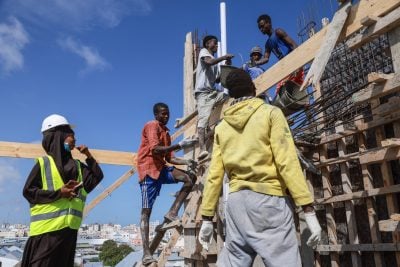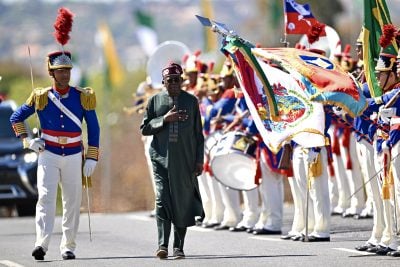During the 4th Common Market for East and Southern African States (COMESA) investment summit which was held in Dubai in March, there was increasing talk of sovereign funds finding their way to Africa.
Africa is now emerging as the investment destination of choice given the very good rates of return (around 29% compared to 10% or less elsewhere), its much-sought-after resources, its market size of around 1bn people and the ever-increasing segment of its consumer class.
However, while the overall level of foreign investment has increased substantially over the decade, investments in badly needed infrastructure have not kept pace. This area, according to many bankers, is now ripe as a secure home for sovereign wealth funds.
But what are sovereign wealth funds, how do they function and how can one access them?
Sovereign Wealth Funds (SWFs) have become dominant players on the international finance stage over the last decade. Collectively, they manage assets estimated at $3.5–$4 trillion – or slightly more than twice the estimated size of the hedge fund industry.
However, some SWFs were battered by the global financial storm that led to a comprehensive review of their portfolio strategies. A recent shift in asset allocation from matured to emerging markets could benefit sub-Saharan Africa.
Broadly speaking, there are three main types of SWFs: stabilisation funds, savings funds and pension reserve funds, although in the main, the majority of established SWFs are either savings funds for future generations or fiscal stabilisation funds.
The first group consists of natural resource funds, with an estimated 80% of total SWF asset holdings controlled by resource-rich countries (namely the UAE, Norway and Kuwait). The focus of these funds is preserving economic stability against commodity price fluctuations and ensuring future generations are not adversely affected by, or indeed benefit from, the exploitation of natural resources by the present generation.
The second group relates to foreign exchange funds. In the main, these are run by Asian countries led by China, Singapore and South Korea. Their focus is generating higher returns on savings – derived from trade balance surpluses – and hedging against ‘currency risk’.
The last group contains the pension reserve funds for nations such as Ireland, New Zealand, Australia, Russia and Norway. These funds are managed separately to prepare for an ageing population.
There are only a few SWF pension funds operating today, for instance, Australia’s Future Fund, Chile’s Pension Reserve Fund, Ireland’s National Pensions Reserve Fund, New Zealand’s Superannuation Fund and Russia’s National Wealth Fund.
Some SWFs have diverse objectives (e.g. Kuwait Investment Authority and Norway’s Government Pension Fund-Global). A number of countries also have more than one SWF with multiple objectives, including Chile, Russia, Singapore and the Abu Dhabi emirate.
Asset-liability management
The optimal asset allocations of SWFs differ significantly, depending on the risk factors affecting their revenues and the expected use of their funds. A longer investment horizon (decades into the future) is traditionally associated with more risk taking.
Conversely, investors with shorter investment horizons hold a larger part of their portfolios in liquid assets in order to meet any unexpected outflows or liabilities falling due.
Usually, risk is defined as the probability of a loss or underperformance relative to a safe ‘fixed income’ asset, such as US Treasuries and other cash-equivalent instruments (i.e. money market funds).
The type and mandates of SWFs largely determine their asset allocations. Savings and pension reserve funds, for example, are expected to have longer investment horizons than stabilisation SWFs.
The stabilisation SWFs are mostly risk-averse investors. They avoid global stock markets and alternative asset classes, including private equity, venture capital, hedge funds, real estate, commodities and infrastructure. The asset allocation of stabilisation funds resembles those of central bank reserve managers – with heavy exposures to cash and liquid bonds.
The investment portfolios of savings funds include sizeable exposures to equities and some illiquid assets such as commodities and property. Historical data suggest stocks outperform cash over the long run but debt securities (bills, notes, Treasury and corporate bonds) as well as global equities figure prominently in SWFs with pension objectives.
Most pension reserve funds hold a long position in inflation-linked securities, which helps to hedge against inflation in future pension liabilities. The London-based EDHEC Risk Institute notes: “This asset-liability management approach is the extension to SWFs of the liabilities-driven investment paradigm recently developed in the pension fund industry.”
Pension funds (unlike savings SWFs) usually do not invest in alternative assets because they are difficult to exit quickly without negatively affecting that asset’s price.
The impact
The 2009 market turmoil, originating on Wall Street, impacted SWFs worldwide. Plunging asset values of equities and alternative investments resulted in huge losses for many SWFs – mainly those with longer investment horizons.
In a few cases, the losses reached a third of the 2008 portfolio valuation, thus reducing SWFs’ long-term returns as well. The value of stabilisation fund assets fell by about 50% between end-2008 and end-2009 following large withdrawals.
Pension and saving funds also sustained equity valuation losses between September 2008 and March 2009, but have since recovered. Those funds with both stabilisation and savings mandates have weathered recent external shocks relatively undamaged because of higher exposures to fixed income assets.
Generally, the crisis impacted asset allocations of SWFs in different ways, with some funds boosting liquidity and others preferring to build more cautious portfolios. In some cases, SWFs with longer-term objectives were obliged to shorten their investment horizons, reflecting unexpected liquidity needs.
Several SWFs with stabilisation goals have reduced their shares of cash holdings either because of domestic funding needs (Chile and Iran), or because of moving to debt securities (Trinidad and Tobago).
SWFs with previous exposures to alternative assets have invested more into such assets, with a view to further diversifying their portfolios. The Korea Investment Corporation (KIO) has included alternative assets investment and increased equity shares. Norway has also raised equity shares and the Australian Future Fund has included fixed-income and increased equity and alternative assets in its portfolio.
Conflicting demands
In the wake of global downturn, the SWFs came under growing pressure to support economic activity in their home markets. Vanessa Rossi, of Chatham House in London, explains: “As their domestic markets were hit by the effects of the global recession, SWFs inevitably became more active at home in providing financial support – patriotism proved far more important than presence in foreign markets.”
Iran’s Oil Stabilisation Fund has been drawn upon to finance rising budget deficits and the Abu Dhabi Investment Authority (ADIA), the world’s biggest institutional investor, along with others, has supported stimulus packages that are aimed at injecting fresh momentum into local economies.
Some SWFs, such as the Qatar Investment Authority, have prevented a ‘systemic’ banking crisis by recapitalising and depositing their assets in domestic banks. The ADIA provided massive liquidity to Dubai corporations during their debt crisis.
Official foreign assets were also reallocated or divested in order to fund deposit insurance schemes and buy domestic stocks so as to bolster markets and investor confidence. The International Monetary Fund (IMF) states: “Rising sovereign liabilities can be expected to weigh on demand for SWF resources for some time to come.”
There is now a clear shift in SWFs’ geographic allocations of resources. Robust growth in emerging markets – led by Brazil, Russia, India, China and South Africa (the BRICs) – and weak activity in OECD economies, has prompted many funds to tilt their portfolios toward the former.
For instance, Singapore’s Temasek reportedly plans to increase investment in Asia, Brazil and Russia and reduce emphasis on OECD countries (from one third to one fifth of total assets). Norway’s SWF has also increased its operations in developing Asian economies.
Future source of funding
A recent IMF working paper, Investment Objectives of Sovereign Wealth Funds, states: “Looking ahead, the scope for SWFs’ stabilising role in international capital markets will remain substantial. Despite their losses during the crisis and greater domestic focus, SWFs’ relative size and influence in the global market will remain large. Furthermore, SWFs’ longer-term investment strategies, relative to most other investors, will continue to play an important stabilising role in the global economy.”
The Monitor Group/Fondazione Eni Enrico Mattei report agrees. It says: “From an international perspective, SWFs help stabilise global financial markets and from a domestic point of view coordinate macroeconomic policy.”
Recent tighter global regulatory environment will impose constraints on some asset classes in which SWFs invest. Also, new transparency and disclosure rules on large complex financial institutions (LCFIs) could prompt similar demands upon SWFs, thereby affecting their cross-border operations.
According to Preqin, a US-based consultancy, “Western governments are more circumspect about the intentions of state-owned funds, particularly when it comes to buying stakes in strategically important companies. The secretive nature of most of the funds feeds this political paranoia and the only guide to their influence on global markets comes from surveys such as the one conducted by Preqin.”
Projections suggest that total SWF assets under management could reach a staggering $7 trillion by the year 2020. The African continent, with huge infrastructure development needs, would benefit greatly from even relatively modest inflows of such official funds.
Some of the Gulf-based financial institutions have set their sights on African countries, mainly in West Africa.
“Dakar [Senegal] is the natural choice to get a foothold into Francophone sub-Saharan Africa, and we plan to start with stakes in local banks there,” says Khaled Al Aboodi, the head of the Saudi Arabia-based Islamic Development Bank (IDB), with total assets of $7bn.
Want to continue reading? Subscribe today.
You've read all your free articles for this month! Subscribe now to enjoy full access to our content.
Digital Monthly
£8.00 / month
Receive full unlimited access to our articles, opinions, podcasts and more.
Digital Yearly
£70.00 / year
Our best value offer - save £26 and gain access to all of our digital content for an entire year!
 Sign in with Google
Sign in with Google 


